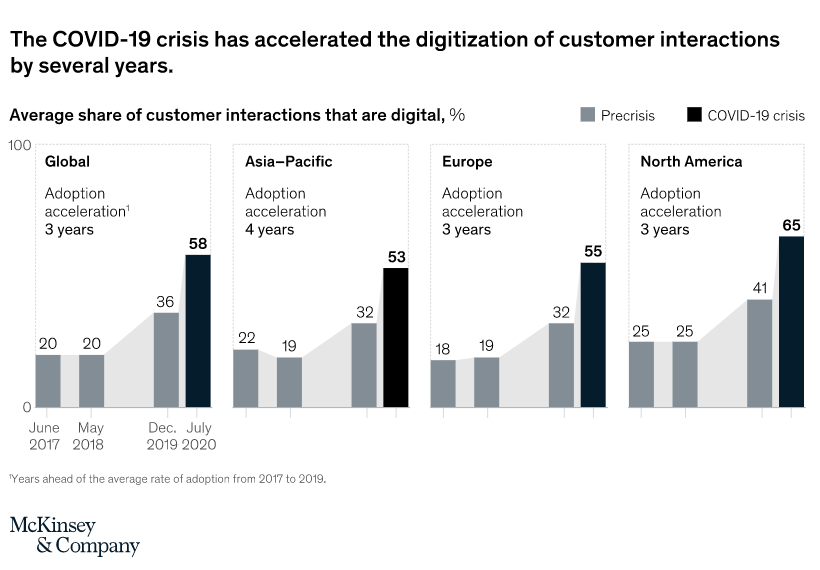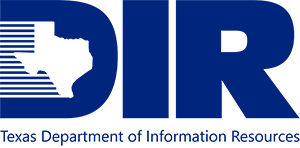Digitalizing your services may have been on your mind for some time. Perhaps you discovered in your research that modernizing your legacy applications offers many measurable advantages, especially these days.
For example, 85% of companies in a 2020 Forrester survey said they’re prioritizing moving technology into every aspect of their operations to boost efficiency, reduce time to market, and boost customer experiences. Other executives expressed their desire to reduce development, operational, and maintenance costs by digitalizing their IT operations.
Perhaps you want to:
- Encourage your on-premises employees to work from home to ensure a better work-life balance. In fact, their productivity, creativity, and energy may improve as a result.
- Hire more independent contractors and freelancers to reduce costs and give them access to your IT network, no matter where they are.
- Offer digital customer services, such as instant messaging and social networking.
- Invest in the latest digital marketing tools, such as data-driven email marketing and remarketing, to boost sales while reducing your cost of goods sold (COGS).
If you implement a sound modernization roadmap, you can ensure a smooth digital transformation that will not backfire. But how do you create a solid IT modernization roadmap?
Legacy Application Modernization Plan: The Roadmap to Your Modernization Initiative
You don’t need a 200+ page plan full of legacy application modernization strategies to make it work for you. It can be as simple as this:

Image: Trianz
The following are the major steps you need to implement on your application modernization roadmap.
1. Conduct a Feasibility Study
Here’s the thing. 87% of organizations knew that digital would disrupt how they conduct business as early as 2018. Yet, just 44% of respondents said they were prepared for this eventuality.
In 2020, this disruption largely manifested as COVID-19. Prepared companies were able to use cloud services to keep working from anywhere, while others shut down in order to wait out the pandemic and its social distancing requirements.

Image: McKinsey & Co.
If you’ve meant to modernize your legacy application, now is the best time to do so.
Perform a feasibility study to determine whether you need to make a move from on-premises to the cloud, or if you should just update your on-premises environment to support cloud-native technologies, such as microservices.
You should modernize existing code or legacy on-premises applications if:
- Your app does not meet your target users’ current and future needs, including working from home or supporting digital services.
- Compatibility problems make it difficult to integrate the legacy system with other tools in your tech stack.
- You no longer receive system updates, security patches, or other help from your original vendor.
- Updates, maintenance, and scaling are expensive.
- Crashing, sluggishness, and reboots affect employee productivity
- Users (including employees and customers) complain of poor experiences.
See any of these signs? Here’s what to do next:
2. Make an Initial Assessment
Start your modernization project by assessing:
- What do you stand to gain?
- What might you lose?
- How much will it cost?
- How long will the modernization effort take, and what impact will that have on your business?
- When is the right time to modernize to minimize service disruption?
- Will you need backup and redundancy systems to keep services running?
- Could you benefit from expert application modernization services to guide you along the way? Or should you handle it in-house?
Next, set your sights on the prize.
3. Set SMART Legacy Goals to Mark Progress
You don’t just want to move away from outdated technologies for aesthetic reasons. A better way is to use specific, measurable, achievable, relevant, and time-bound goals to justify the modernization program.
For example, in terms of time, you can use an architecture that allows you to decouple your monolithic application into multiple, smaller services at first. By improving the smaller services over time, you can minimize disruptions and spread out software development costs.
4. Pick a Suitable Architecture for the Modernization Strategy
Your most skilled software engineers will need to assess the existing code architecture in this step. Essentially, you need to figure out what must change before modernizing it.
For instance, you may need to refactor existing code to make it cloud-ready if you want to migrate legacy apps to the cloud. A lift-and-shift migration may be the best option if you require a quick and cost-sensitive cloud migration. The downside here is it limits the number or types of cloud-native technologies you can offer or be compatible with.
Overall, you can choose from five cloud migration strategies and compare them with your needs to discover which one is the right fit.
As an example, you may want to experiment with options such as single-tenancy and multi-tenancy architecture when using Software-as-a-Service (SaaS), assuming you prefer to run workloads on a ready-made solution, rather than building infrastructure from the ground up.
But if you need to build custom solutions to be similar to your existing programs—perhaps to ease user onboarding and workflow transitions—you’ll need to decide if you want to use:
- Microservices architecture alone
- Containers and application containerization with microservices
- Containers alone
- Containers with a container orchestration tool such as Kubernetes or Docker
- Microservices with a monolithic interface
- On-premises architecture that supports microservices on-site
Each approach has pros and cons, as well as long-term effects on customer experience, service delivery, and your IT budget. Make sure you talk to experienced engineers before making your choice.
5. Implement. Implement. Implement.
Here’s a shocking finding: Most organizations see cloud costs increase rather than decrease because of insufficient application modernization or application optimization techniques, such as poor cost governance. This results in massive wastage and overspending on IT costs.
Some projects introduce data security flaws and infrastructure misconfiguration that threaten their modernization initiatives. Gartner shows that these difficulties primarily stem from inexperienced developers implementing the modernizations. That’s why it’s important that you ensure your best software developers are central players in your legacy modernization project.
6. Ensure Continuous Development via DevOps
Finally, it’s important to plan for checks and balances that’ll make sure your modernization strategy rolls out according to the plan you set from the beginning.
If, for instance, you decide to modernize legacy applications over three years, continuous improvement strategies can help support a smooth, efficient, and timely transition. Utilizing DevOps workflows will also ensure your engineers are working within well-defined processes so you can maintain your cloud-ready or digital-first roadmap.
Create a Suitable Software Modernization Roadmap Today
Smooth transitions come from knowing what you need to do—before you embark on your application modernization project.
Experienced developers make the process of modernizing your legacy apps easier. But if you’re experiencing difficulties finding qualified software engineers, qualified near-shore solutions may be able to help.
At Simpat Tech, you’ll find vetted and experienced modernization experts who can help you modernize apps affordably, avoid service interruptions, and train your users accordingly. Book your best time to talk through your next app modernization roadmap with us.
